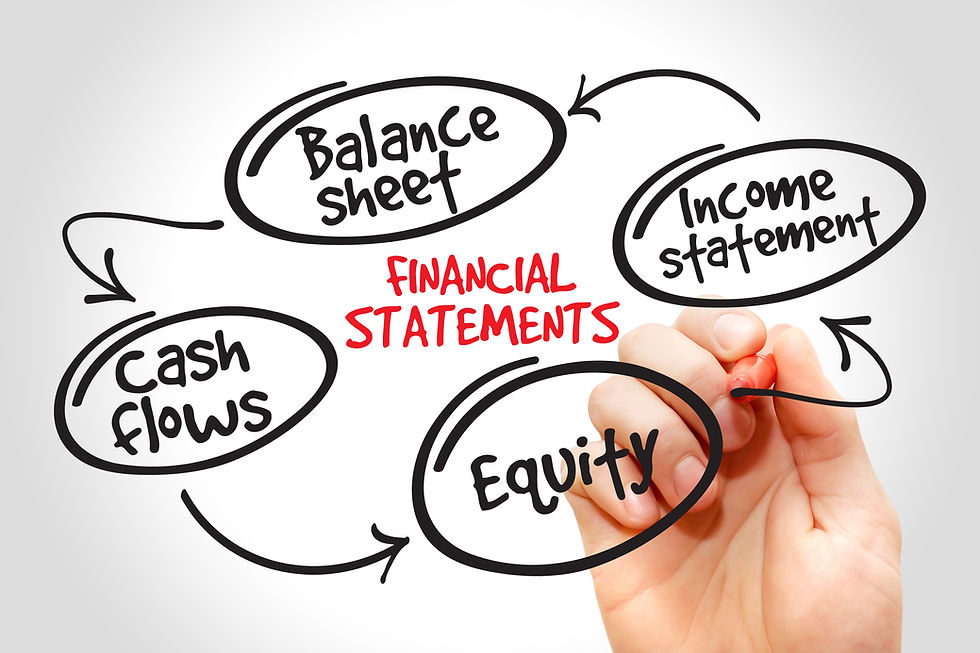Small Business Financial Statements — what they mean and how they're interconnected
- Heidy Rehman

- Jul 15
- 3 min read

Like many small business owners, you may have started your company because you experienced a personal need for something that wasn't been fulfilled by the market. Or you simply wanted to share and monetise a particular skill you've developed.
A problem you may have encountered, in common with many of your peers, is that you struggle to understand what your financial statements mean. This may feel like a blindspot when you're monitoring how your business is performing. We want to help remedy that.
Good financial management is critical to the success of any business. This blog sets out to explain the foundations of accounting for small businesses — your company's financial statements.
Specifically what each of the three financial statements represent and how they connect with each other.
This is the first of a series of building blocks we've created to help small business owners better understand their company's finances. So you'll be in a better position to drive your company forward and present it to investors and lenders when you're looking to raise funding.
What financial statements mean
Income Statement (your profit and loss)
This tells you how much money (revenue) your company has made and how much it has spent (expenses) over a specific time period.
Whatever's left after subtracting your expenses from your revenue is your net income (or profit). Of course, if the figure is negative then you'll have made a loss.
Balance Sheet (snapshot of your finances)
This shows you what your company owns (its assets) and what it owes (its liabilities) at a specific point in time.
The difference between your company's assets and liabilities is its equity. This is the value of the company that belongs to its owners.
Cash Flow Statement (actual money movements)
This tracks the actual cash coming in and going out of your company over a specific time period.
It's different from the income statement because it looks at real cash flow rather than 'paper' profits (where revenue and expenses are usually matched to record when a product or service is delivered to a customer).
How financial statements are interconnected
Income Statement to Balance Sheet
Whatever profit your company makes (from your Income Statement) is added to your company's equity on the balance sheet.
Income Statement to Cash Flow Statement
The net income (profit/loss) from the Income Statement is the starting point for the Cash Flow Statement. Adjustments are then made for the timing of cash payments and cash receipts. The result shows how well you are turning your profits into cash.
Cash Flow Statement to Balance Sheet (and vice versa)
Your Cash Flow Statement will show how the cash generated from your business' operations was spent (e.g. buying new equipment, paying off a loan, paying dividends, etc). What's left is your cash on hand and this will be shown on your Balance Sheet.
Your Cash Flow Statement explains what caused the change in your cash position from the start to the end of the period. These changes will also be reflected in your Balance Sheet. For example, changes in the assets you own and the liabilities you owe as well as what you've drawn out from the business in the form of dividends.
Why understanding the connections between your financial statements matters
Understanding these connections will help you see not just how much money your company has made but also how you've managed its cash and assets.
It gives a fuller picture of your company's financial health. This should help your managers and any investors you may have make better decisions.
Other blogs in our understanding financials for small business series
Here are links to the other blogs in this series:
.png)


